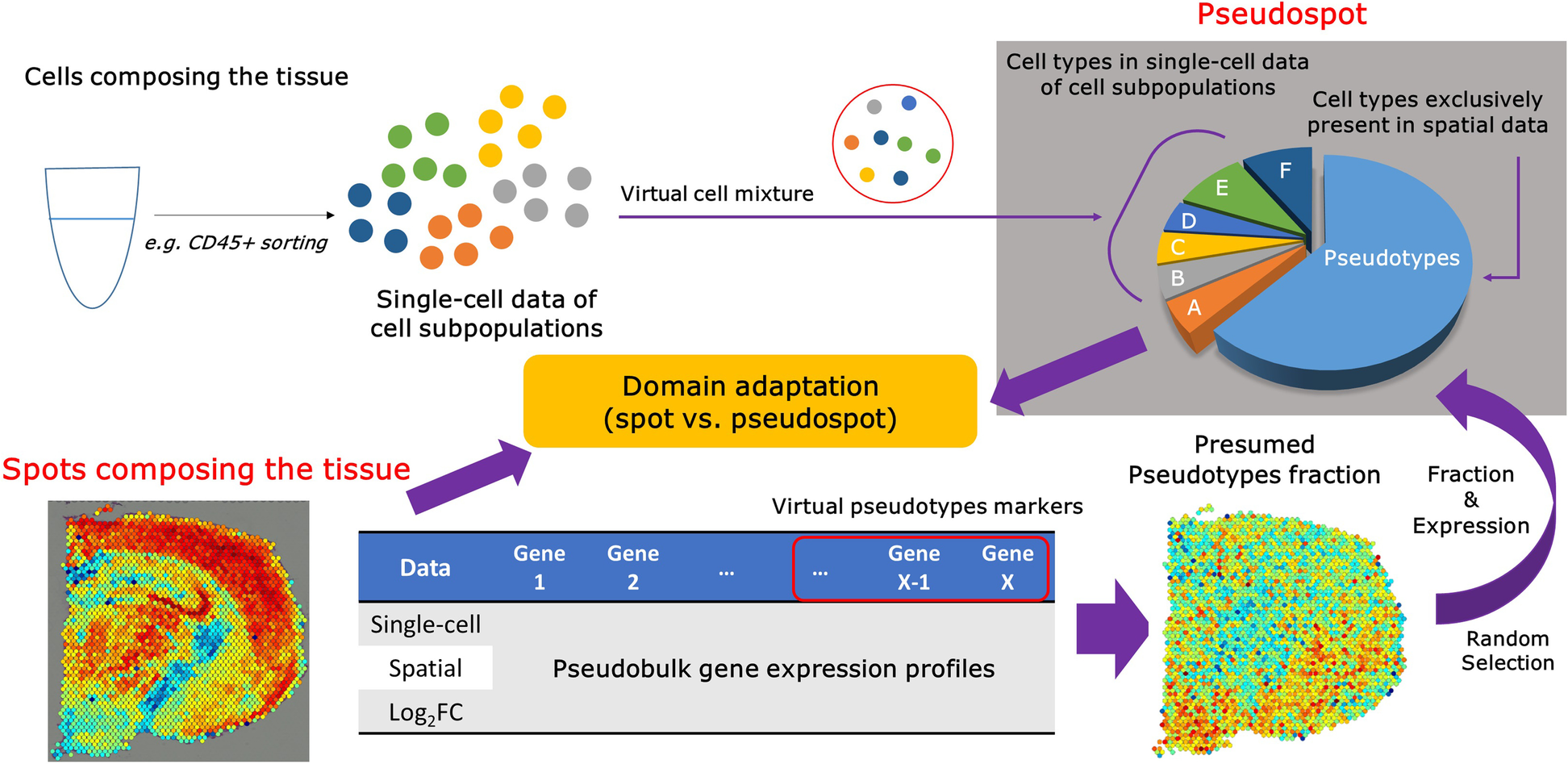Fig. 1
From: spSeudoMap: cell type mapping of spatial transcriptomics using unmatched single-cell RNA-seq data

Mapping cell subpopulations to the spatial transcriptomic data with spSeudoMap. The cell types of the single-cell transcriptomic data acquired from cell sorting experiments can be spatially mapped to the tissue using spSeudoMap. The single-cell data of cell subpopulations are composed of sorted cells from the tissue, and the cell types cover only part of those in the spatial transcriptomics data. To create the reference dataset that mimics the spatial data, virtual cell mixtures, pseudospots, are defined in which all cell types from the tissue are included. First, the cell types exclusively present in the spatial data are aggregated and named pseudotypes. The virtual markers for the pseudotypes are selected from the top genes highly expressed in spatial pseudobulk compared to single-cell pseudobulk data. Then, the pseudotype fraction in the spatial spots is estimated from the module scores (sc.tl.score_genes in Scanpy) of the top 20 pseudotype markers. The fraction and gene expression of the pseudotypes are assigned based on the presumed pseudotype fraction and expression of a randomly selected spatial spot. Lastly, the target type proportion of the pseudospot, explained by cell types in the single-cell data, is filled with the randomly sampled cells from the single-cell data of cell subpopulations. Finally, the pseudospot is considered a reference dataset for the domain adaptation method CellDART [10]
